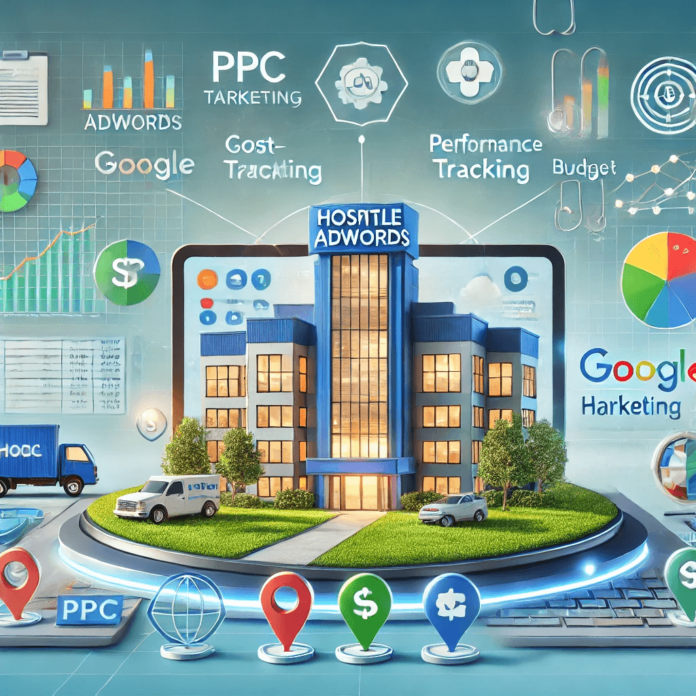Introduction
Achieving cost-effective hospital marketing is crucial for attracting patients while staying within budget. With the right strategies, hospitals can leverage AdWords budget tips to maximize their marketing spend and generate more leads without overspending. PPC keyword savings for healthcare help hospitals connect with patients searching for services like emergency care, specialized treatments, or routine check-ups. Investing in affordable healthcare marketing through Google AdWords allows hospitals to reach their target audience efficiently and drive more appointment bookings. In this guide, we’ll explore practical ways to use AdWords to save money and increase patient engagement.
Cost-Effective Hospital Marketing: Smart Strategies to Maximize ROI

Implementing cost-effective hospital marketing strategies is essential for healthcare providers looking to attract more patients without overspending. With the rise of digital advertising, hospitals can now reach their target audience efficiently using platforms like Google AdWords, social media, and content marketing.
Why Digital Marketing Is Essential for Hospitals
With more patients turning to the internet to find healthcare providers, having a strong online presence is critical. Traditional marketing methods such as TV ads, print media, and billboards can be costly and often fail to deliver measurable results. Digital marketing, particularly Google AdWords, provides hospitals with the ability to:
- Target the right audience at the right time.
- Track ad performance and optimize spending.
- Control costs with flexible budgeting.
- Improve return on investment (ROI) through strategic ad placements.
How AdWords Helps Hospitals Save Money
1. Pay-Per-Click (PPC) Model: Budget-Friendly Advertising
Google AdWords operates on a pay-per-click (PPC) model, meaning hospitals only pay when a potential patient clicks on their ad. This ensures that marketing dollars are spent on users actively searching for healthcare services, rather than being wasted on uninterested audiences.
Benefits of PPC for Hospitals:
- No upfront costs – you only pay when someone engages with your ad.
- Cost-effective for hospitals with limited marketing budgets.
- Easy to scale based on hospital needs and goals.
Pro Tip:
Use negative keywords to prevent wasted ad spend by filtering out irrelevant searches.
2. Precise Targeting for Higher ROI
One of the biggest advantages of AdWords is its precise targeting capabilities. Hospitals can ensure their ads are shown to the right audience by using targeting features such as:
- Geo-Targeting: Display ads to potential patients within a specific radius of the hospital.
- Demographic Targeting: Focus on age, gender, and income levels most relevant to your services.
- Keyword Targeting: Show ads based on specific search terms like “urgent care near me” or “best orthopedic hospital.”
This level of targeting ensures that marketing budgets are used efficiently and reach the most relevant audience.
Example:
A hospital can target people within a 20-mile radius searching for “emergency medical services” to drive local traffic and reduce ad spend on non-local users.
3. Flexible Budgeting Options
Unlike traditional advertising, AdWords offers hospitals complete control over their budgets. You can set daily or campaign limits to avoid overspending, and adjust them as needed based on ad performance.
Ways AdWords Offers Budget Flexibility:
- Set daily and monthly ad spend limits.
- Increase or decrease spending based on demand (e.g., flu season or special events).
- Focus budget on high-performing keywords and audience segments.
Pro Tip:
Regularly review campaign performance and adjust bids to get the most out of your budget.
4. Performance Tracking and Measurable Results
One of the biggest challenges with traditional marketing is the lack of measurable results. AdWords provides hospitals with detailed insights into ad performance, allowing them to track key metrics such as:
- Click-Through Rate (CTR): Measures how many people clicked on the ad.
- Conversion Rate: Tracks how many ad clicks resulted in appointment bookings or inquiries.
- Cost-Per-Click (CPC): Helps optimize spending by identifying the most cost-effective keywords.
By monitoring these metrics, hospitals can make data-driven decisions to improve their campaigns and save money by focusing on what works.
Pro Tip:
Use Google Analytics to track patient interactions beyond the ad click, such as form submissions or appointment bookings.
5. Ad Scheduling for Maximum Efficiency
Hospitals can save money by using ad scheduling, which allows them to display ads during peak search times when potential patients are most likely to be searching for healthcare services. This prevents budget wastage during off-hours when search volume is low.
Best Practices for Ad Scheduling:
- Run ads during working hours when call centers are open.
- Focus on peak search times based on analytics data.
- Avoid running ads late at night unless for emergency services.
Example:
A hospital specializing in maternity services may choose to run ads during the early mornings and evenings when expecting parents are actively searching for information.
6. Remarketing to Reduce Wasted Spend
AdWords offers a powerful remarketing feature that allows hospitals to re-engage users who have previously visited their website but didn’t take action. This targeted approach increases the chances of converting leads into patients without additional acquisition costs.
Advantages of Remarketing:
- Keeps your hospital top-of-mind for potential patients.
- Encourages users to complete appointment bookings.
- Offers lower cost-per-conversion compared to new patient acquisition.
Pro Tip:
Use remarketing ads to provide special offers, discounts, or reminders for health check-ups.
7. Cost-Effective Mobile Optimization
Since a large percentage of healthcare searches happen on mobile devices, AdWords allows hospitals to create mobile-friendly ads to capture on-the-go patients. Mobile optimization ensures that ads load quickly and provide an easy way to call or book an appointment directly.
Mobile Ad Features That Help Save Costs:
- Click-to-call buttons to encourage immediate contact.
- Location extensions to guide patients to the nearest hospital location.
- Responsive ads that adjust based on device screen size.
Example:
A patient searching for “urgent care near me” on their phone can immediately click the ad and call the hospital directly.
Conclusion
Google AdWords for hospitals offers a highly cost-effective digital marketing solution that enables hospitals to attract more patients while optimizing their budgets. With the ability to target specific audiences, control costs, and measure results, hospitals can achieve better ROI compared to traditional advertising methods.
By leveraging strategies such as geo-targeting, PPC budgeting, performance tracking, and mobile optimization, hospitals can ensure they reach the right patients at the right time without overspending.














